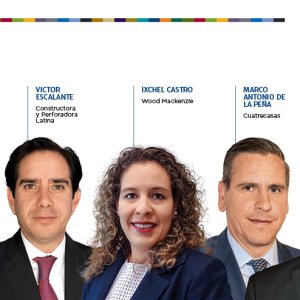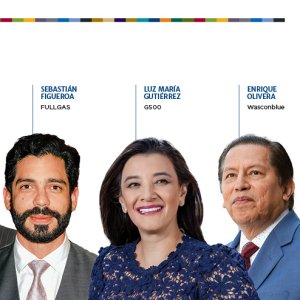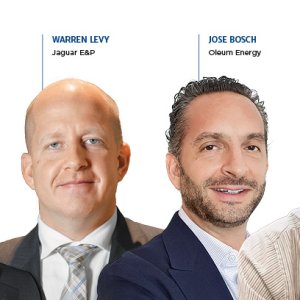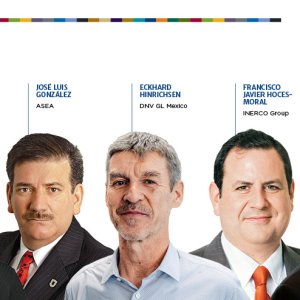
The Future of Urban Mobility in Mexico
J. Arturo Zapata, CEO and President of the Board of Corporación Zapata, warmly introduced the speakers of the panel to discuss the Future of Urban Mobility in Mexico. Laura Ballesteros, the pioneer of the current mobility regulation, via her position as Undersecretary of Planning at SEMOVI, launched the discussion with the topic of the 21 million commutes that take place throughout the capital city every day, and the need to coordinate different municipalities and their authorities to ensure a complete mobility solution. She touched on urban planning and housing, and appealed for a change of city living, so that we can reach an alternative solution to workers living hours away from their workplaces. She also advised the need to integrate parking in any urban planning. “More investment is needed, to create several options other than private vehicles for capital city citizens to travel.”
Jorge Jiménez, General Manager of Maintenance at the Metro Public Transportation System, referred to Ballestero’s introduction, and reiterated the need for policies and regulations that drive change and innovation in metropolitan planning. He admitted that incorrect decisions, through uncoordinated decision-making, led to disorganization. Jiménez said that mobility must be integrated, through private and public transport, ultimately to reduce commute times, to improve the population’s quality of life. His invocation of the metropolis showed how the city developed by uniting what was previously several smaller towns, demonstrating the reasons for the disorganized capital city.
Francisco Sordo, General Manager at UBER México, cited Uber’s transformation of the use of a privately owned vehicle. The company met a need that no other transport option could cater to. His mention of UberPool stipulated out how the app has been able to reach zones in the city that public transport did not, and is much more accessible in terms of price for the average citizen.
Diego Solórzano, CEO and Founder of Carrot, explained how many cars are only used during 10% of their lifetime, and suggested that all the time spent parked, not being used, is wasted money. As a further complementary service to mobility, Solórzano’s company fills a need as an alternative to Uber, where users can drive themselves, and also use the brand’s cars to leave the city on longer trips and only pay for the commuting time.
Rather than stating the need for reduced car use, Ballesteros indicated that car use must be more responsible. “Despite having all seen that even creating second levels to certain main roads in the city was not a solution, 70% of mobility’s budget has still been spent on grey infrastructure, rather than other mobility options. The 5.5 million cars in the city account for only 20% of the population,” she told the panel, but still results in unavoidable traffic, and she cited the Metro and Metrobús as where the investment should be destined. Ballesteros describes capital city dwellers as multi-modal transport users, defending the need for the average pedestrian to be able to choose out of several options of intelligent mobility. She partly blames the design of the city being targeted toward much more sparsely populated cities. “The two issues rely on excessive motorization, and on unplanned, rapid densification of previously empty spaces.”
Jiménez returned to the topic of the five years of our lives that are spent in private vehicles, as they offer the most comfortable, door-to-door transport. However, he reminded the audience that more infrastructure for cars will result in more cars, and that the alternative should be, as Ballesteros says, investment in the transport that can take many more people at a time than private cars. Sordo agreed that we need to find alternatives to excessive private car ownership. The Uber General Manager said that the company wants citizens to recover their city, through better use of cars and putting more people in fewer cars, especially through the car sharing option of UberPool. Although this is not the same as an increase in buses and retains the use of private cars, it maximizes the use of city infrastructure.
“Multimodal transport already exists in the city, but few people are willing to give up their cars, or to pay for the improvement of the transport system,” claimed Solórzano. Having pointed out that the implications for each person means that Mexico City’s citizens do not take responsibility for their part in the mobility issue, he recognized that the initiatives that would improve the traffic system would require unpopular political decisions. Ballesteros agreed that resistance to change is crucial, and that citizens need to alter their mentality to think of a street being efficient based on the number of people using it, rather than the number of vehicles. The final point, made by Jiménez, alluded to the issue concerning global warming, and mentioned the electric Metro network as an improved alternative to the high-sulfur diesel used in many cars, as well as the suspected high-sulfur gasoline currently being sold in Mexico. Zapata closed pointing out the distance that still has to be covered to reach an acceptable alternative to the private car for the middle classes is immense. “The intrinsic need to own a car does not originate in the distance they must travel, necessarily, but rather in the quality and reach of existing public transport.” Zapata concluded by stating that people need to change, not the ownership, but the use of cars, and the type of cars.














